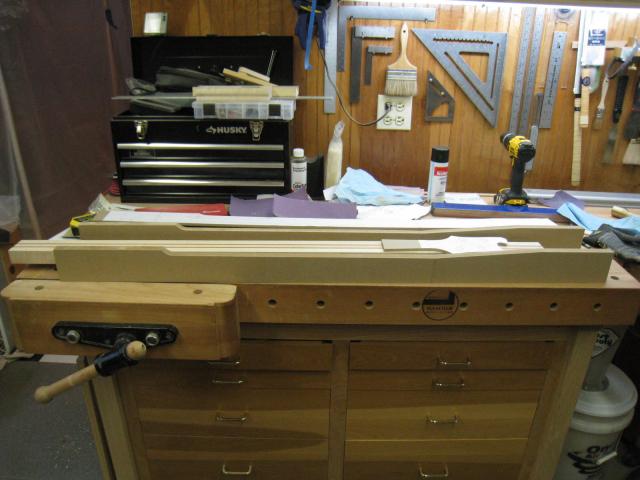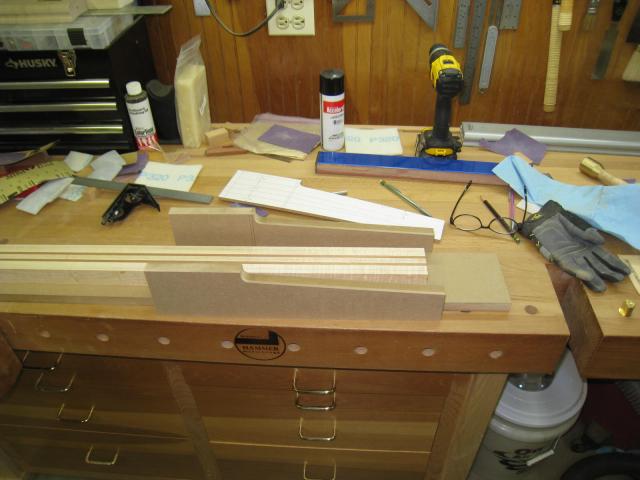
Originally Posted by
george wilson

Ebony for binding what,Julie? If it's the body,be prepared to learn how to bend it.
The ebony would outline the body. Rickenbacker also runs binding along the neck but if I did that I'd have to use koa or maple on the neck as the fretboard is ebony.
For the body, I know I'd have to steam the wood, form it and then glue it in place. I've been thinking 1/4" x 1/4" strips of Macassar ebony. Then when it's glued in place, I'd come back and do a roundover on it. Still just a thought.
Here's the progress on the jigs I'm making for basic shaping of the neck:
This one is for the back side. It will create the 4 degree angle at the headstock and also cut the waste away from the back. The final shaping will be done the old fashioned way.

This will cut the front side of the headstock. Both headstock cuts will be made after the "wings" are glued on.
The final Ric shape will be done last.





 Reply With Quote
Reply With Quote









